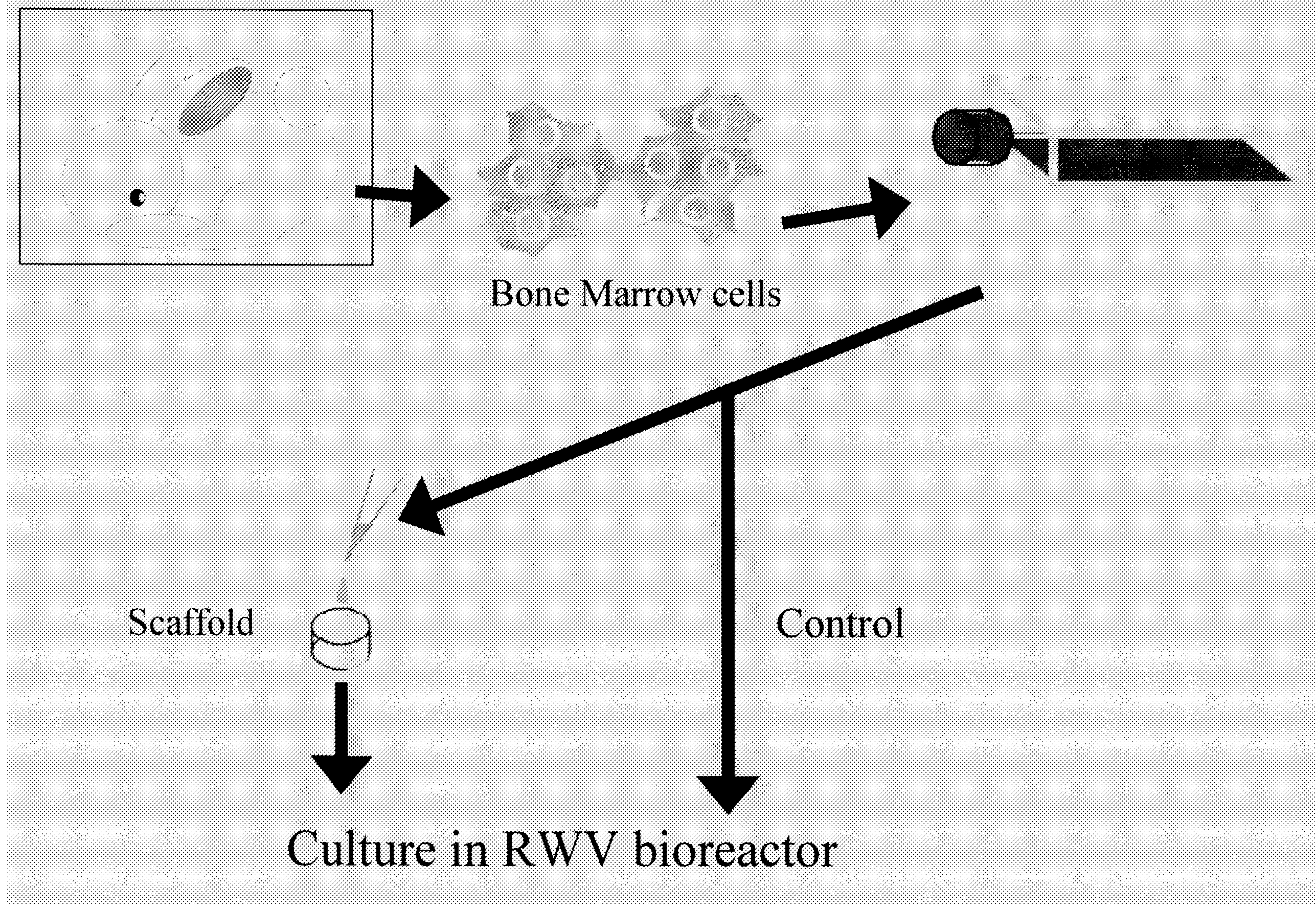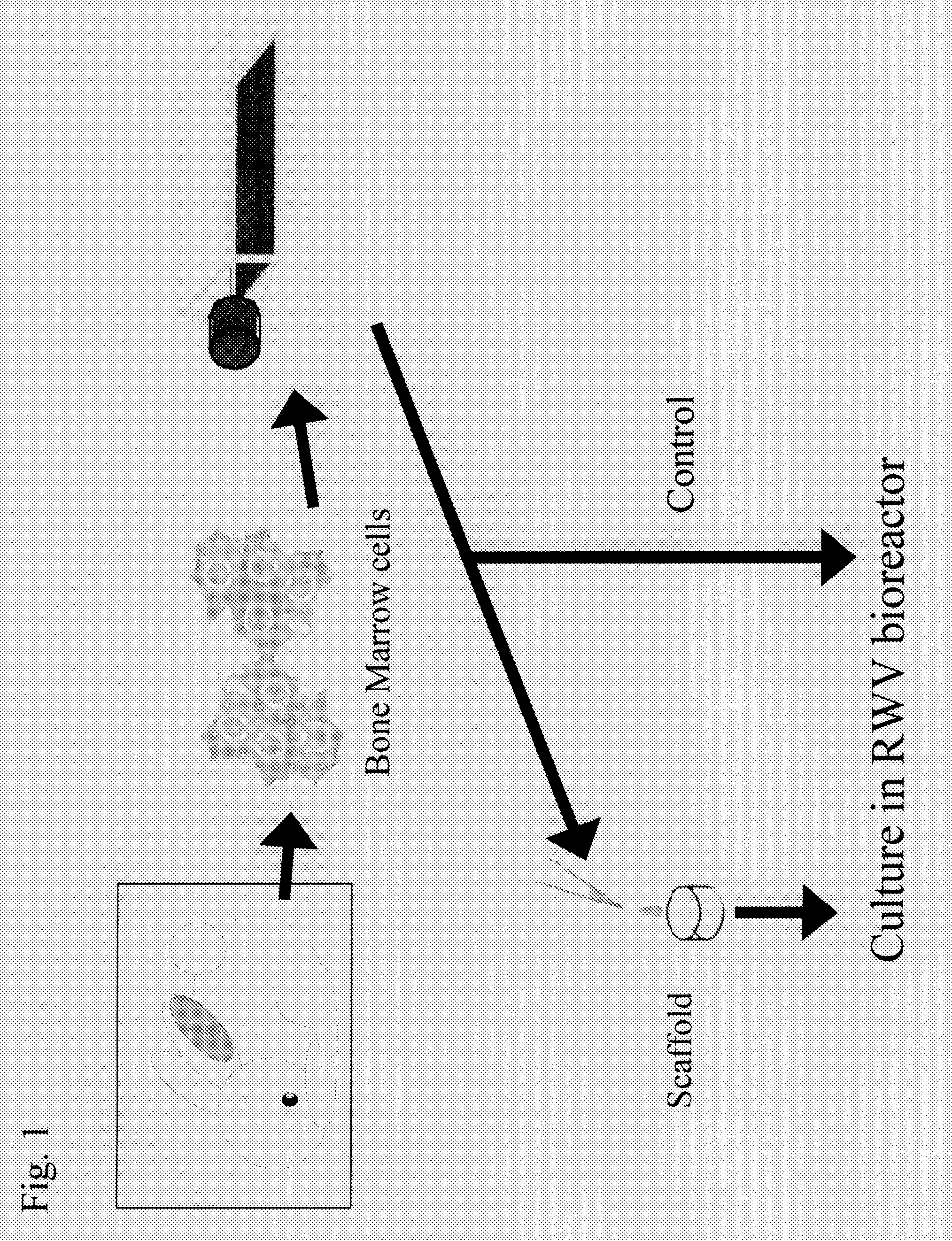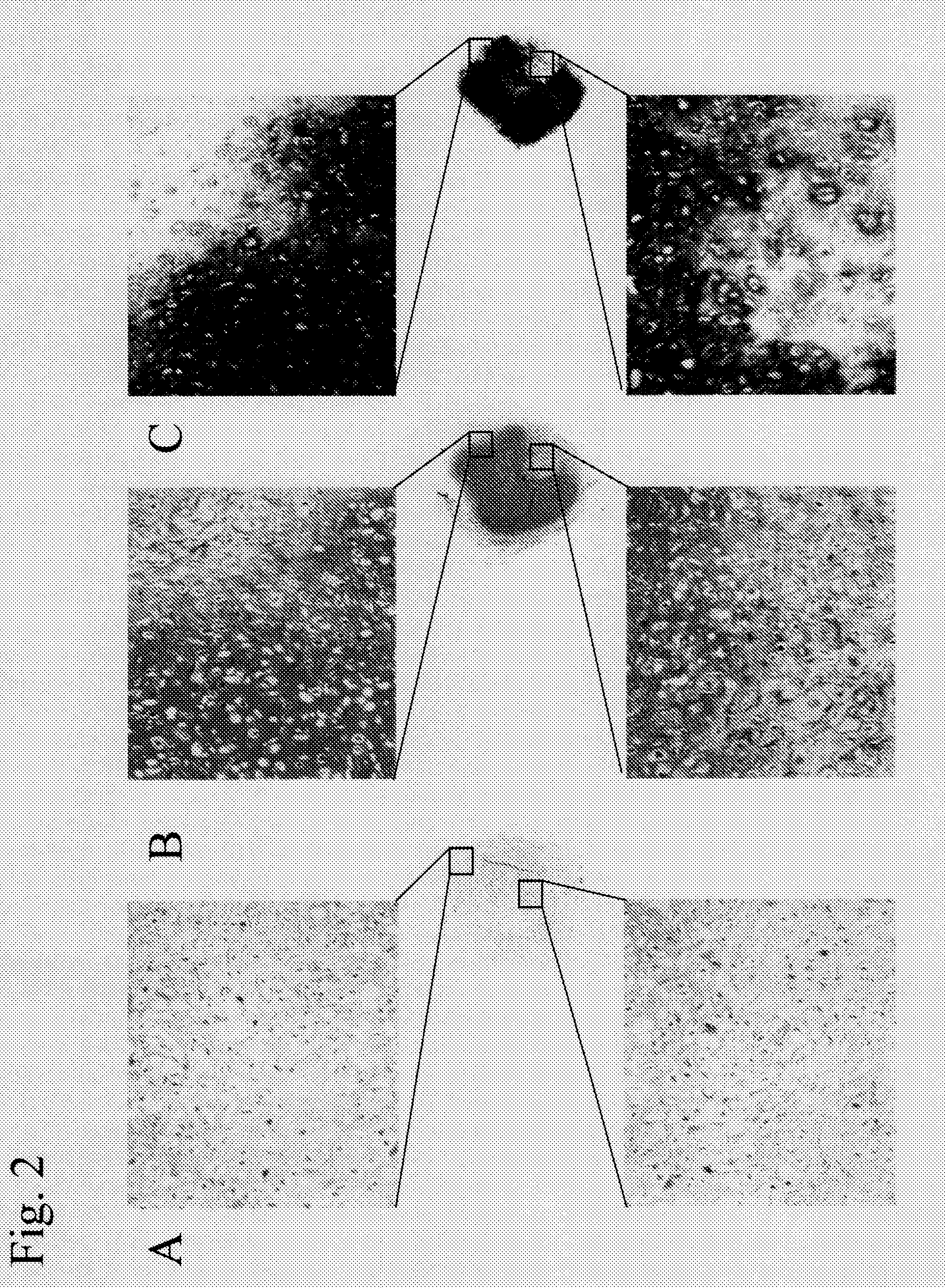Method for cartilage tissue regeneration via simulated microgravity culture using scaffolds
- Summary
- Abstract
- Description
- Claims
- Application Information
AI Technical Summary
Benefits of technology
Problems solved by technology
Method used
Image
Examples
example 1
Cartilage tissue engineering from mesenchymal stem cells derived from rabbit bone marrow using collagen sponge in RWV bioreactor
1. Experimentation
[0060](1) Preparation of Mesenchymal Stem Cells Derived from Rabbit Bone Marrow
[0061]Mesenchymal stem cells derived from rabbit bone marrow were prepared from the femur of a 2-week-old JW rabbit (female) in accordance with the method of Maniatopoulos et al. (Maniatopoulos, C., Sodek, J., and Melcher, A. H., 1988, Cell Tissue Res., 254, pp. 317-330). The harvested cells were cultured in DMEM containing 10% FBS (Sigma) and Antibiotic-Antimycotic (GIBCO BRL) for 3 weeks, and they were allowed to grow.
(2) Culture of Mesenchymal Stem Cells Derived from Rabbit Bone Marrow
[0062]The mesenchymal stem cells derived from rabbit bone marrow thus prepared were seeded on collagen sponges (prepared by extracting and purifying type I collagen from the porcine skin, lyophilizing the same, and crosslinking the same) at a density of 1.5×108 cells / cm3 and sus...
example 2
Comparison of Static Culture and RWV Rotation Culture with the Use of Collagen Sponges
1. Experimentation
[0076]Bovine articular cartilage was harvested and sliced, and the cartilage matrix was removed with the aid of collagenase and cultured in a common cell culture medium (MEM+10% FBS) to prepare bovine articular cartilage-derived chondrocytes. The bovine articular cartilage-derived chondrocytes were seeded on collagen sponges (prepared by extracting and purifying type I collagen from the porcine skin and lyophilizing the same) at a density of 1.5×108 cells / cm3 and suspended in 10 ml of DMEM culture medium (Sigma) containing 10−7 M dexamethasone (Sigma), 10 ng / ml TGF-β (Sigma), 50 μg / ml ascorbic acid (Wako), ITS+Premix (BD), 40 μg / ml L-proline (Sigma), and Antibiotic-Antimycotic (GIBCO BRL). The resultant was subjected to static culture (pellet culture) or rotation culture using an RWV bioreactor (Synthecon) for 3 hours.
[0077]Static culture was conducted by adding 10 ml of the cell ...
example 3
Comparison of Various Cellular Scaffolds in Cartilage Tissue Engineering Using RWV Bioreactor
1. Experimentation
[0079]Using open-cell polylactic acid (OPLA, BD) and a porous composite of hyaluronic acid and hydroxyapatite (hereafter abbreviated as “HAP-HA”) as scaffolds, cartilage tissue regeneration was performed using an RWV bioreactor. OPLA is a synthetic polymer scaffold synthesized from D,D-L,L-polylactic acid (spongy / noncompressive), and the declared pore size thereof is between 100 μm and 200 μm.
[0080]Bovine articular chondrocytes that had been prepared in the same manner as in Example 2 were seeded on OPLA and HAP-HA at a density of 1.5×108 cells / cm3 and suspended in 10 ml of DMEM culture medium (Sigma) containing 10−7 M dexamethasone (Sigma), 10 ng / ml TGF-β (Sigma), 50 μg / ml ascorbic acid (Wako), ITS+Premix (BD), 40 μg / ml L-proline (Sigma), and Antibiotic-Antimycotic (GIBCO BRL). The resultant was subjected to rotation culture using an RWV bioreactor (Synthecon) for 2 weeks....
PUM
 Login to View More
Login to View More Abstract
Description
Claims
Application Information
 Login to View More
Login to View More - R&D
- Intellectual Property
- Life Sciences
- Materials
- Tech Scout
- Unparalleled Data Quality
- Higher Quality Content
- 60% Fewer Hallucinations
Browse by: Latest US Patents, China's latest patents, Technical Efficacy Thesaurus, Application Domain, Technology Topic, Popular Technical Reports.
© 2025 PatSnap. All rights reserved.Legal|Privacy policy|Modern Slavery Act Transparency Statement|Sitemap|About US| Contact US: help@patsnap.com



